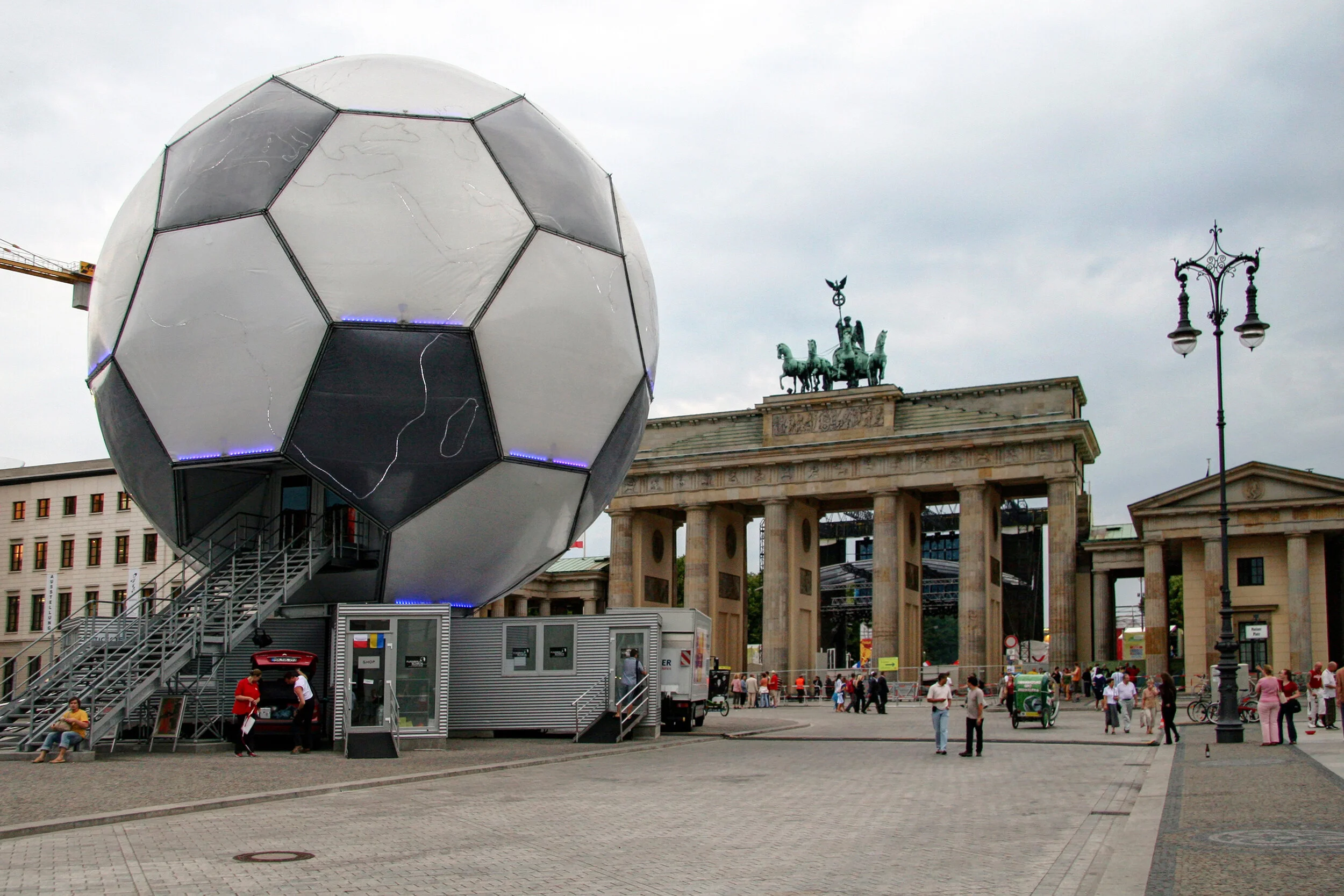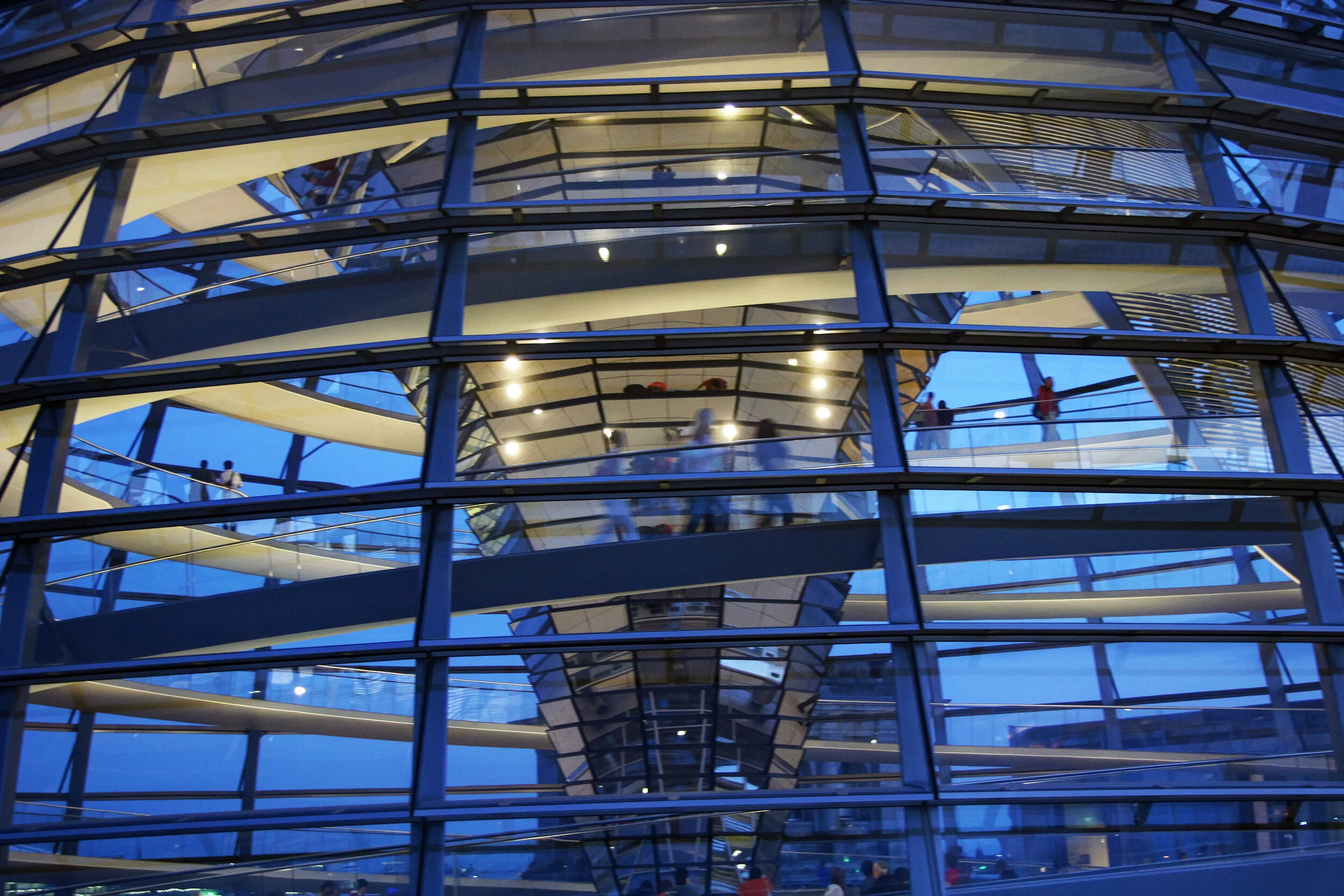
Page 11 of 12
Berlin, Germany
And she says- ooh darling don't you know, the darkness comes and the darkness goes
Way back in 1988 when there was still an East and West Germany , the idea of a holocaust memorial in Berlin started to slowly take shape. A competition was held, a winner was announced, the government decided that it didn't like the design, another competition was held, another winner was announced, it was debated in Bundestag, approved, built and opened last year. The built memorial was designed by local New Jersey born architect Peter Eisenman in collaboration with Richard Serra, my current all time favorite sculptor. Through various disputes, Serra dropped out in 1998 and Eisenman spent seven more years getting such an otherwise simple looking design built.
If you were to visit the memorial today, there is a thoroughly reasonable chance you might not even realize it what it is, there is no sign telling you that this is a place where you should be remembering such tragic events. From the sidewalk a series of relatively innocuous, slightly shifted low boxes (which Eisenman likes to refer to as stelae) march in all directions and fill the entire city block. It is when you enter the field that things start to get interesting. While the top of the stelae may seem somewhat consistent, the site's topography is most certainly not. Before you know it you find yourself surrounded in a field of thousands of these boxes which have started to become high walls, each somewhat vertically tilted from another but each marching on that fixed grid. As you walk through you'll occasionally see someone briefly cross a path, always fearful that you'll smack right into them- the sharp 90 degree corners of the stelae provide no warning to prevent any tourist on tourist collisions, a real concern and I'm sure one that ends up scaring the hell out of a few people every single day.
I had been looking forward to walking through this since I had seen the design back during my first visit to Berlin in 1997. For me it did not disappoint and knowing its history I felt it was an especially effective and moving experience. Still one person's moving experience can be another person's playground, I can imagine and have seen other visitors laughing, running and just enjoying themselves in a place, neither realizing or caring that it was inspired by a time of such incredible darkness.
The memorial could not have asked for a better site. It is directly across the street from the Tiergarten, across the street from the US Embassy and centered between Brandenburg Gate and Potsdamer Platz. The site used to be home to the (Third) Reich Chancellery Gardens and during the very long construction period a few bunkers (though not Hitler's) were actually found- supposedly Hitler finished out the war underground and across the street (out of view but supposedly across the street and to the left), unmarked as to not unintentionally create any type of (neo) Nazi shrine.
If Hitler had defeated the British or Russians (or possibly had decided not to stupidly attack both at the same time) and somehow Germany was victorious, Berlin would have looked a hell of a lot different. Hitler's architect and good pal Albert Speer had worked on a design for transforming the city into Germania, capital of the world! The main intervention was to be a massive, out of scale north south boulevard that would have ripped through the Tiergarten and extended several miles from a massive, out of scale triumphal arch to a massive, out of scale pantheon called the Volkshalle.
The Volkshalle was designed by Speer to be roughly a thousand feet high (almost as tall as the Chrysler Building in New York and over four times higher than the Reichstag) and was to feature the world's largest dome. How big was the dome you ask? Well it was hypothesized that it was so big that in the winter, clouds would form inside from the crowd's breathing and it would actually rain, and (in a more ominous warning) that the acoustics could possibly amplify sounds so great as to cause some of the 180,000 visitors inside to go deaf. Fun.
Luckily for everyone the Nazis (and Germany) did not win World War 2 and Albert Speer did 20 years in prison (for war crimes involving slave labor), wrote a few books and died in the 1980s. He claimed that he really wasn't into the whole Nazi thing but rather just wanted to see his designs get built, although that doesn't explain how he ended up rising in the Nazi hierarchy (he was also Minister of Munitions) or completely justify his close personal relationship with Hitler Over time he has gotten a pass, kind of like Leni Riefenstahl or Philip Johnson, and even today his successful architect son has felt no need to change his name from Albert Speer, Jr into something a little less reminiscent of his wartime dad.
Of all the museums I had visited this time around (including the celebrated Hermitage in St Petersburg), my favorite in terms of exhibits was the German History Museum. The collection spanned their history from tribes to Kaisers and beyond. The upper floor covers all of the boring parts, everything right up to World War 1 (it turns out it was all the Austrians fault- who knew?), while the ground floor covers all of the interesting parts. While the museum does occasionally try to mitigate some of the facts (like for example pointing out that not ALL Germans hated the Jews), it also takes a real straight look at what happened. There are a lot of amazing artifacts from the Nazi and DDR eras, including the Volkshalle model. Highly recommended if you get a chance.
Apart from the compelling chronological history of the permanent collection, a new wing designed by still living American architect I.M. Pei connects via an underground passage from an enclosed courtyard. The intervention is simple but still nice, featuring a great curved stair connecting galleries showing not especially compelling temporary exhibits with other galleries showing not especially compelling temporary exhibits.
There never really was a Charlie. Checkpoint Alpha was when you first left West Germany and entered East Germany, Checkpoint Bravo was when you left East Germany and entered West Berlin, and Checkpoint Charlie was when you left West Berlin and entered East Berlin. Today it is luckily only a hollow shadow of its once important self- now just a few signs on the Friedrichstrasse remind you of what once was. Hell, even the famous "You Are Leaving the American Sector" sign is a now just replica- the original was stolen during all the chaos in those first few days when the wall was breached.
Throughout the city, the former path of the wall was replaced by a series of innocuous bricks that cut across roads, sidewalks and even impact buildings. Today it's amazing to even think that there was ever even a wall there in the first place.
The East Germans were famous for more than the super efficient Stasi secret police and all of those especially masculine, hormone treated female Olympic athletes- they also really knew how to do a walk/don't walk sign. The little guys wearing hats feel almost whimsical compared to all those boring capitalist-pig drones on the walk/don't walk signs in West Berlin.
Under a late afternoon, under a crayon blue sky, a look up at the observation tower at Alexanderplatz (where the view was ok but nothing as special as expected) as the spherical shape was clearly taking advantage of local events to dress itself up as a giant, potential crushing football.
This is Pariser Platz in Berlin, looking from the Brandenburg Gate and on toward Unter den Linden. The World Cup took over a lot of the signature public places. Not only was there a giant football (with a suspicious looking, non ADA compliant fire exit) in Pariser Platz, but a big chunk of the Tiergarten and the park just west of the Reichstag were closed for celebrations.
The official World Cup Fan Fest in Berlin started at the Brandenburg Gate and just kept going west into the Tiergarten, with even more screens, more beer and more fans the farther out you go. For games that you did not have a ticket for, this was the place to go. This is the crowd early on in the France-Spain elimination round game, as the game progressed the crowd continued to swell, although it was reportedly nothing like it would have been for a Germany, English or Brazilian game. Still there was a large collection of French fans, easily enough to overpower the smaller, far less organized Spanish contingent and enough to make the Fan Fest feel like a fan fest should.
If you were anywhere in a hotel in Europe during the World Cup, sooner or later you saw the fine, all German ZDF television coverage of at least one of the games. As part of their presentation, ZDF took over the public space of Helmut Jahn's Sony Center at Potsdamer Platz and turned it into a combination beer hall, stadium and half time show. Cameras would swoop from all possible angles, and football commentators would speak knowingly in German as the visible background crowd feverishly sent text messages to alert all of their friends they were on tv. Off hours the site was partially accessible and not nearly as fun as normal, with a giant, non regulation football as your only real consolation for otherwise traveling so far.

